
Angelo Morbelli, an Italian painter of the late 19th and early 20th centuries, left an indelible mark on the art world through his mastery of social realism. Born on August 16, 1853, in Savona, Liguria, Morbelli’s artistic journey unfolded against the backdrop of a transformative era marked by cultural and political shifts.
Raised in a middle-class family, Morbelli’s early years laid the foundation for his future as an artist. His innate passion for creativity and a keen observation of the world around him led him to formal artistic training at the prestigious Brera Academy in Milan, Italy. It was during these formative years that Morbelli’s artistic sensibilities began to take shape, influenced by the artistic experimentation and societal changes of the time.
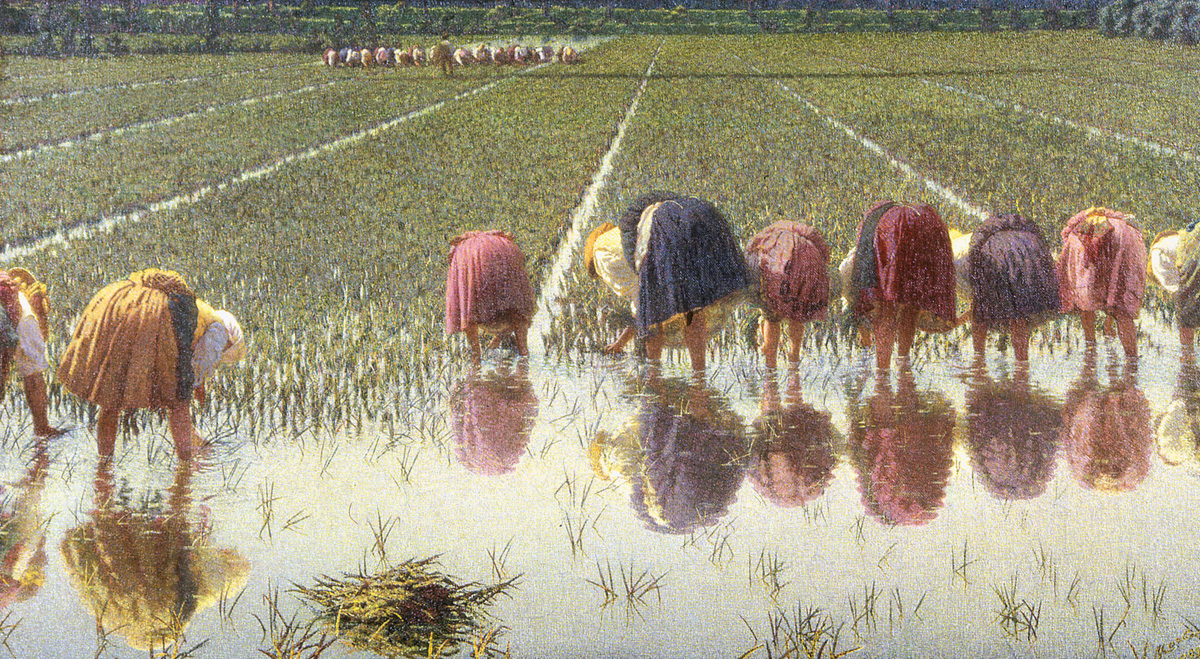
As a painter, Morbelli distinguished himself through his commitment to social realism, a movement that sought to depict the harsh realities of society, particularly focusing on the lives of the working class. His canvases became windows into the struggles, joys, and tribulations of ordinary people, and his brushstrokes captured the essence of the human experience in a rapidly changing world.
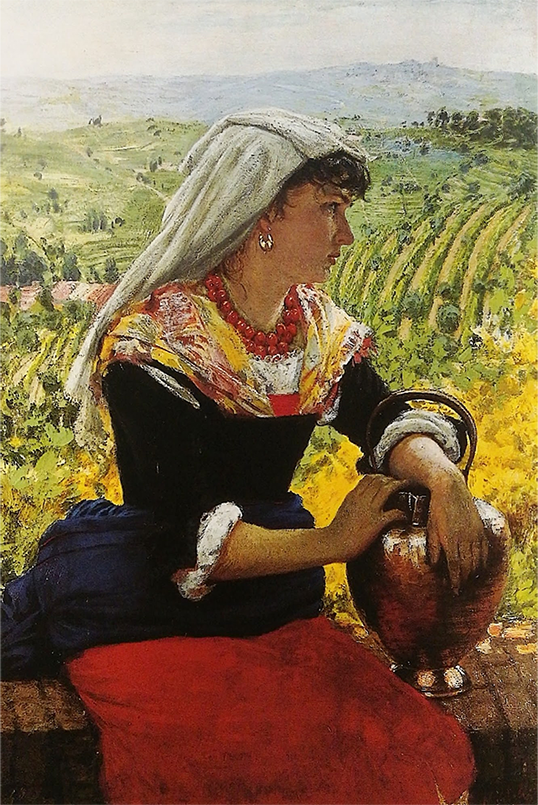
Morbelli’s early works hinted at his inclination toward social themes. “In the Wheat Fields,” one of his notable paintings, depicted the laborious existence of agricultural workers, showcasing an early manifestation of his social consciousness. However, it was with the adoption of the Divisionist technique, associated with pointillism, that Morbelli’s art truly began to evolve.
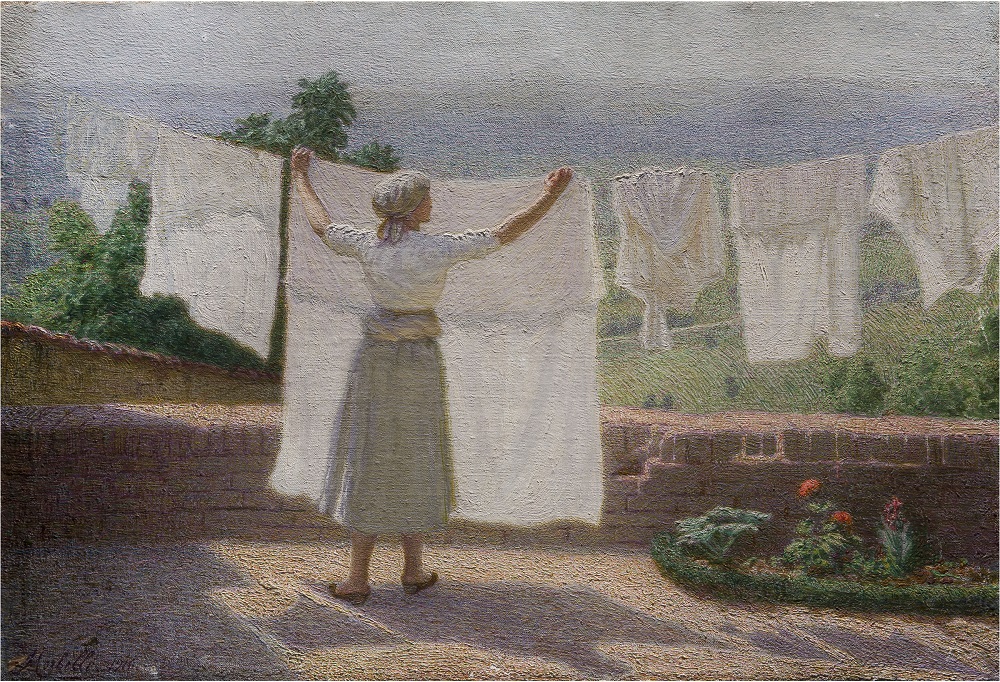
The Divisionist technique involved the use of small, distinct dots of color, which, when viewed from a distance, blended together to create a harmonious composition. Inspired by the works of artists like Georges Seurat and Paul Signac, Morbelli embraced this technique as a means to infuse luminosity and depth into his paintings. The meticulous application of color dots allowed him to convey not only the external reality of his subjects but also their internal emotional states.
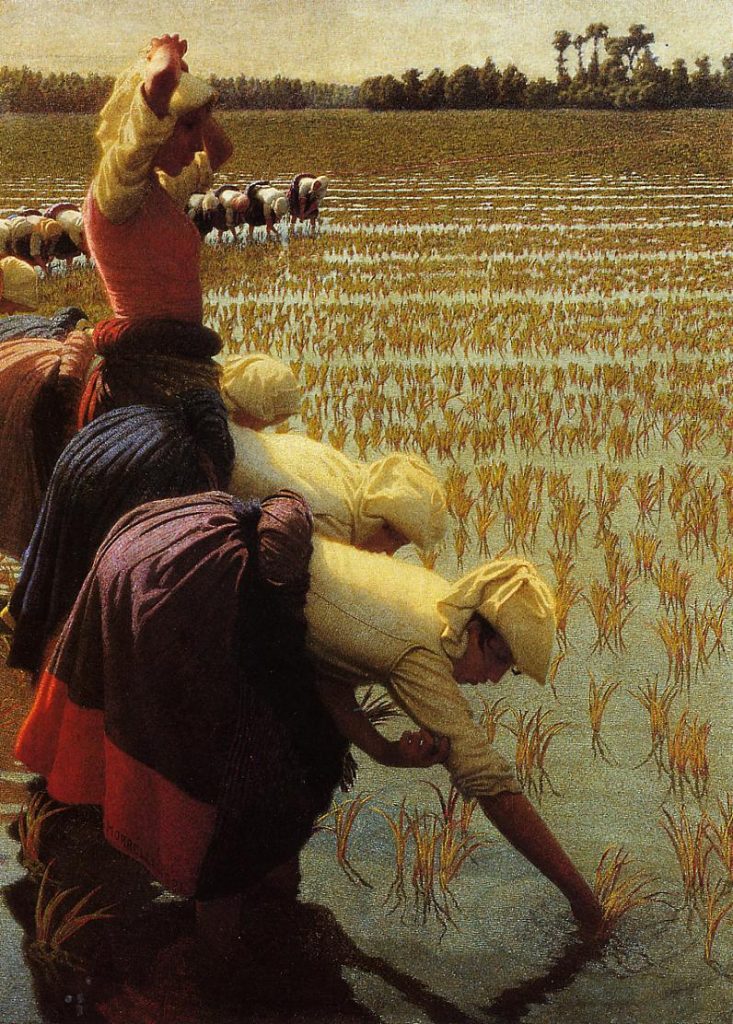
One of Morbelli’s most renowned works, “The Song of the Machines” (1899), stands as a powerful testament to his commitment to social commentary. The painting portrays a group of female factory workers surrounded by the machinery of industrialization. The repetitive nature of their work and the seemingly mechanical environment speak to the dehumanizing aspects of rapid industrial progress.
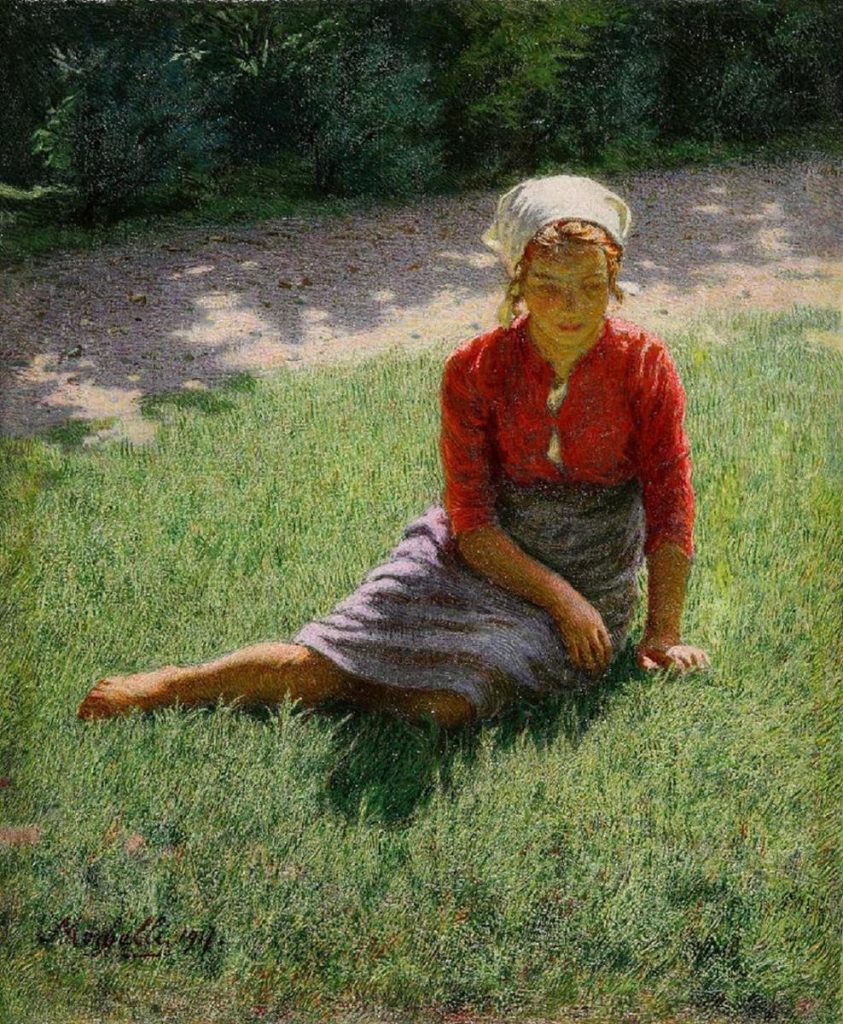
In “The Song of the Machines,” Morbelli masterfully captures the dualities of progress and its toll on human lives. The delicate balance of light and shadow, achieved through his Divisionist technique, accentuates the emotional nuances within the scene, inviting viewers to reflect on the broader implications of societal transformations.
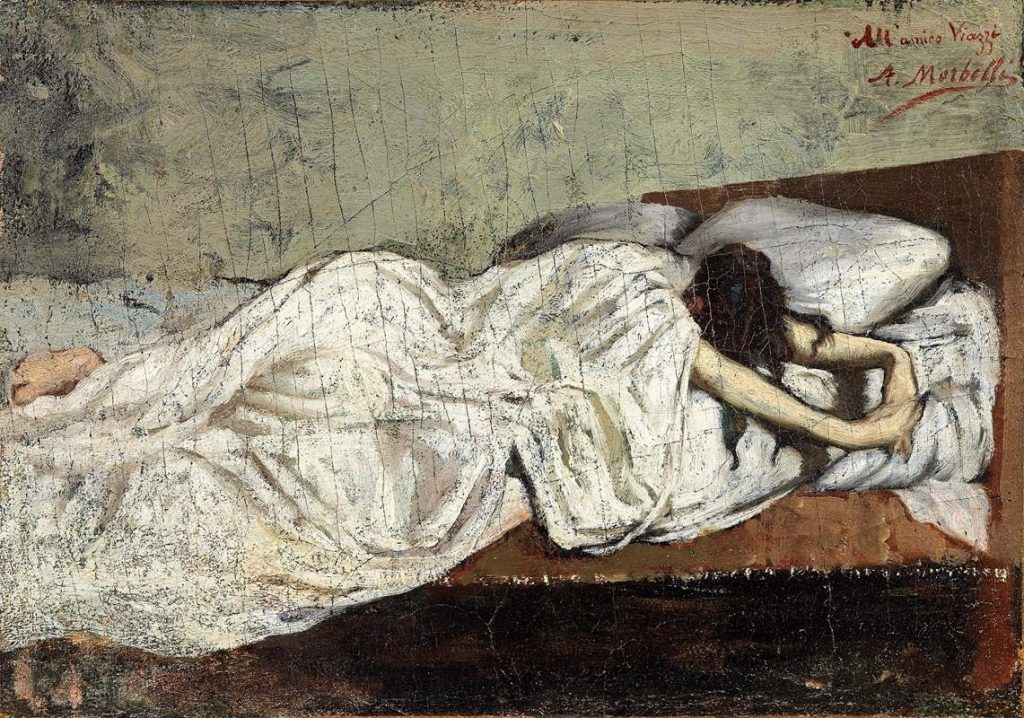
Beyond the canvas, Morbelli actively participated in the social and political movements of his time. Italy, in the late 19th and early 20th centuries, witnessed fervent activism and calls for reform. Morbelli aligned himself with progressive ideals, advocating for social justice and workers’ rights. His art became a visual manifesto, echoing the voices of those on the margins of society.
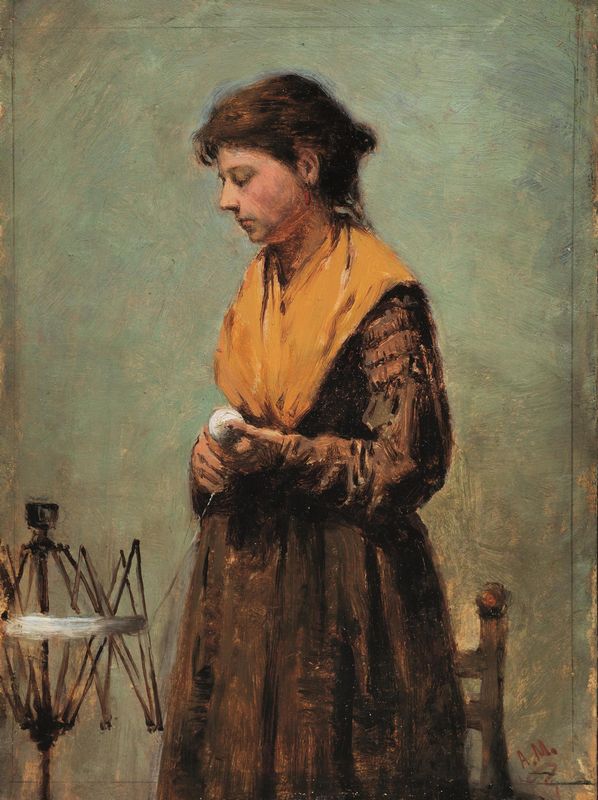
Angelo Morbelli’s life and work were intertwined with the complexities of his era. His paintings not only documented the external realities of a rapidly industrializing Italy but also served as a reflection of his own evolving consciousness. The adoption of the Divisionist technique added a layer of depth and emotion to his art, allowing him to convey the inner worlds of his subjects.
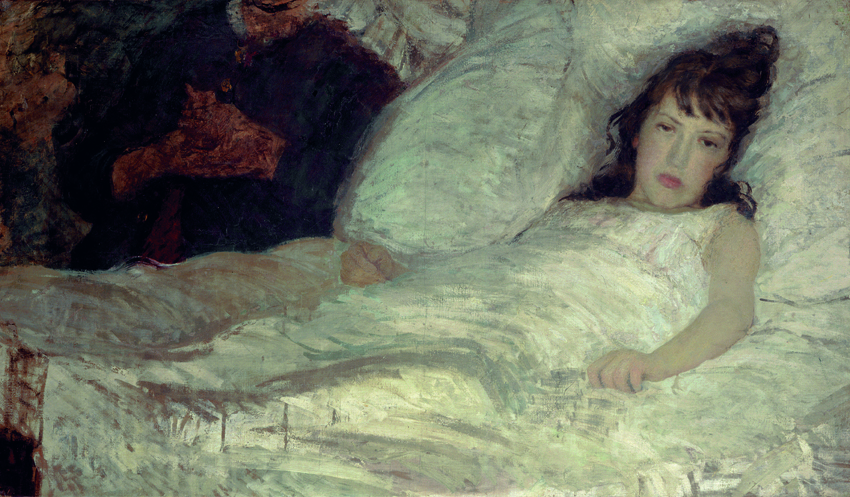
As the years unfolded, Morbelli’s contributions were recognized with numerous accolades, including prestigious awards and honors. His legacy endures in the halls of art history, where his paintings serve as both aesthetic marvels and poignant narratives of a society in flux.
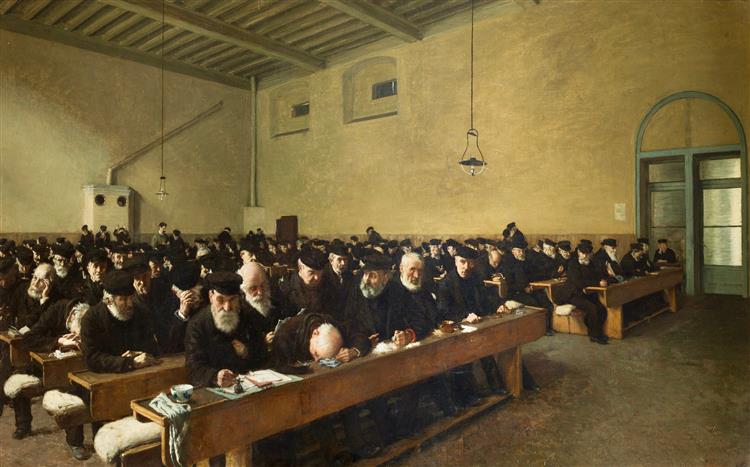
Angelo Morbelli passed away on December 26, 1919, leaving behind a body of work that transcends temporal and societal boundaries. His paintings continue to resonate, inviting viewers to engage with the timeless themes of labor, progress, and the enduring strength of the human soul. In the tapestry of art history, Morbelli’s brushstrokes remain as vivid and relevant as the messages they convey—a testament to the enduring power of art to illuminate the human condition.




